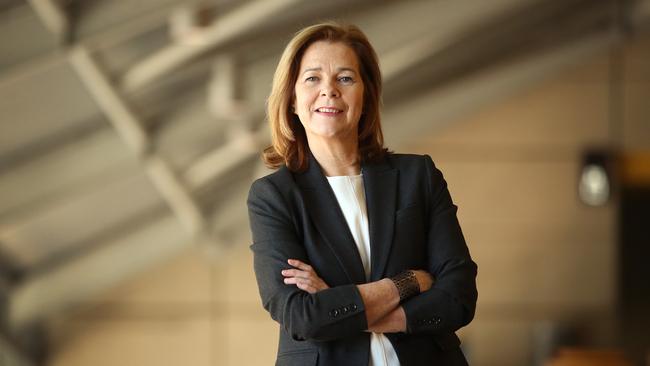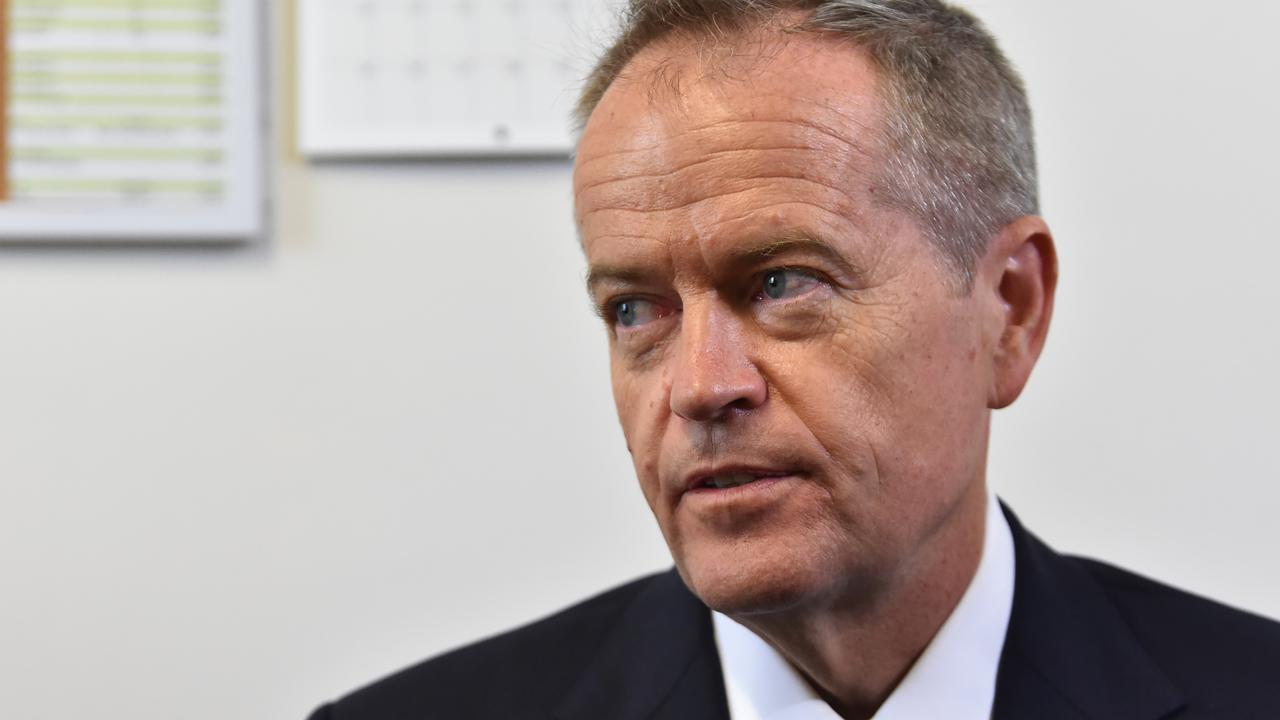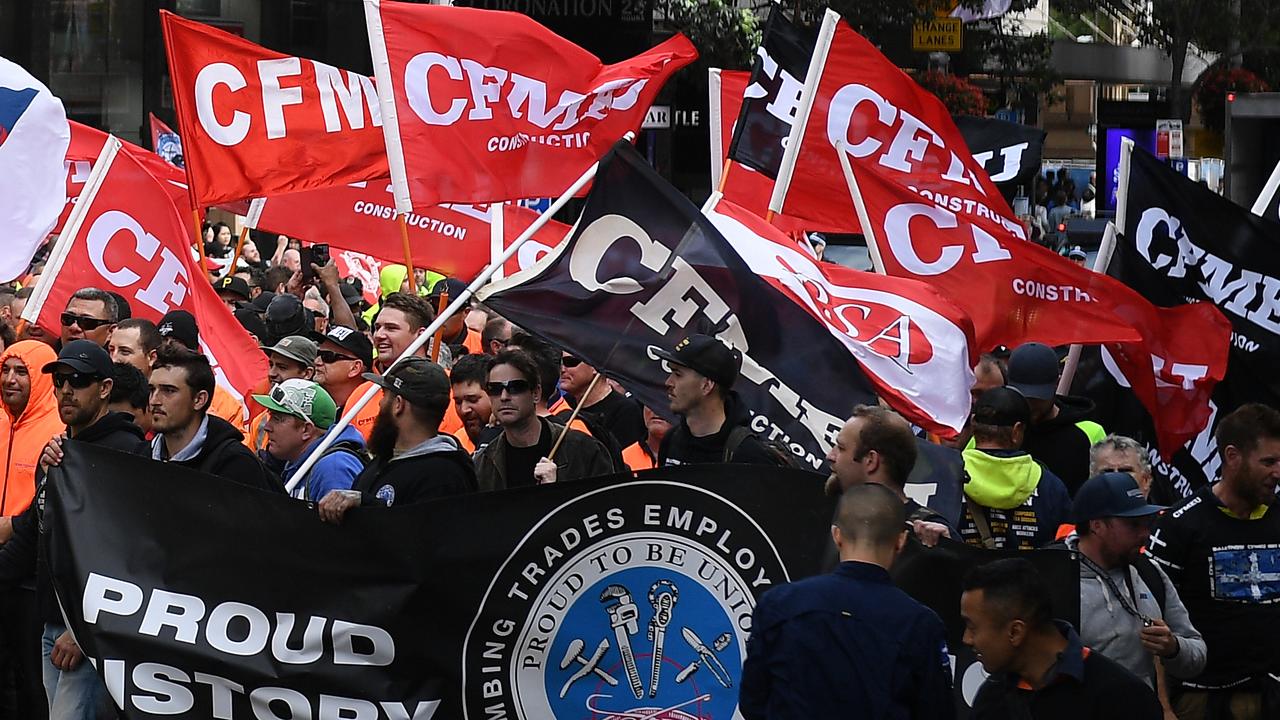Big pay gap exposes top unions’ inequality
New analysis of Australia’s highest paid union officials has debunked the movement’s claims to be champions of pay equity.

New analysis of Australia’s highest paid union officials has debunked the movement’s claims to be champions of pay equity, revealing women hold less than a third of top-ranking union positions and are being paid on average $36,000 a year less than their male counterparts.
A new Menzies Research Centre study has revealed the gender pay gap across the five highest paid positions in each of Australia’s largest unions now sits at 20.38 per cent. The study by the Liberal Party-aligned think tank is based on salary disclosures made to the Registered Organisations Commission. It shows top male officials earned an average salary of $199,580 in the past financial year, compared with $162,669 for women.
As the Australian Council of Trade Unions backs an ALP plan to force companies to release pay-gap data as a means of tackling inequality, Menzies Research Centre research fellow John Slater has used the union figures to caution against Labor’s proposed “slapdash” policy.
Mr Slater argues the union pay gap is consistent with other industries in which working hours are long and unpredictable, and governments should consider tax deductions for nannies and cutting red tape in childcare centres over the ALP plan to close the gap.
“The correct lesson to draw from the union pay gap is not that trade unions are mired in unconscious bias or even that their female officials are systematically undervalued,” Mr Slater said. “Rather, it is entirely consistent with the wealth of evidence that one of the key drivers of the gender pay gap is that fewer women are prepared to work jobs requiring long and unpredictable hours of work. Addressing the reasons that lead women to opt for more stable but lower-paying jobs is an issue worthy of serious discussion. Tax deductions for nannies, easing the costly regulatory burden on childcare centres and continuing to normalise flexible work arrangements are just some of the ways policymakers and workplaces could lighten the load on working parents.”
GRAPHIC: How the genders compare
The study is based on 11 unions with more than 30,000 members whose salary data has been made publicly available in disclosures to the Registered Organisations Commission. Omissions include the Australian Education Union, whose six top positions are held by women, including president Correna Haythorpe and federal secretary Susan Hopegood, but the AEU’s data was not provided to the ROC’s public register. The ACTU rejected the analysis, calling it a biased account providing an “incomplete” and “inaccurate” picture of pay equity.
But Grattan Institute chief executive John Daley said the findings weren’t surprising given that many of the unions included represented workforces and blue-collar trades which were male-dominated, while many industries outside the union movement had similar pay gaps.
Mr Daley disagreed with the Menzies argument against the ALP plan to force companies to disclose their gender pay statistics, saying it could be used alongside other measures, such as tax deductions for nannies, to boost wage equality.
“There’s nothing wrong with having both,” he said. “Having more flexibility and dealing with issues in childcare and all that is what I would call input measures, and then looking at the actual pay gap in companies is an output measure ... with good policy, changes usually happen when you have both.”
An ACTU spokesman defended the organisation and unions as pioneers of gender equity.
“The Australian union movement have been trailblazers for gender equity in Australia, and we utterly reject this biased and ideological attempt to discredit us,” the spokesman said. “Our secretary is a woman and our president is a woman. Four of our eight vice-presidents are women, as are 37 of the 62 members of the ACTU executive. Of the 793 delegates who attended our 2018 congress — the highest decision-making body of the union movement — 47 per cent were women.”
The union peak body also took a swipe at the Menzies Research Centre for its own poor track record of just three women on a 12-person board, two of whom are Coalition senators.
ACTU secretary Sally McManus and president Michele O’Neil declined to comment directly on the findings, as did former ACTU president and newly elected federal MP Ged Kearney.
The analysis also revealed that females make up just 28 per cent of top paid staff across the union movement, which puts its gender representation on par with the Coalition’s federal cabinet, in which females make up 26 per cent of members. The union movement is also outdone by the ASX100. Females make up 30 per cent of all directors in the nation’s top 100 companies.
Victorian CFMEU construction assistant secretary Shaun Reardon said union officials were trying to address the gender balance among their top-ranked officials, but it was a long-term process that started with an effort to recruit equal numbers of women and men going into the entry-level rungs of the industry.
“I’d love to see our division headed by a woman, but we’ve got a long way to go,” he said. “We’ve done a lot of hard work in the space to promote and encourage women to enter the industry but there’s a lot more to do, but our EBAs don’t discriminate between male and female. The wage is based on your classification, not the sex.”


